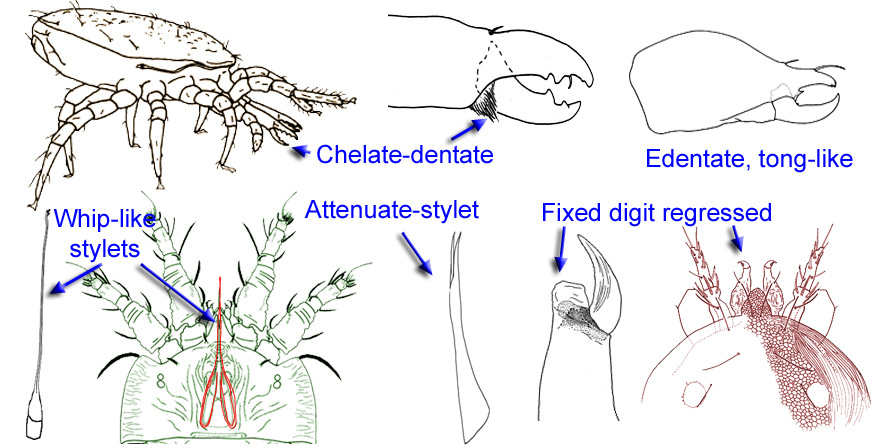
Cheliceral Form
The primitive cheliceral condition in all of the acarine orders is chelate-dentate, but chelicerae became highly modified in many derivative lineages. The simplest change is to loose the teeth on both digits, resulting in grasping chelicerae that somewhat resemble ice tongs as happens in the Rhagidiidae (Prostigmata) and some Phytoseiidae (Euseius spp.) (Mesostigmata). In most Prostigmata, the fixed digit has regressed to a lobe or membranous sheath for the movable digit, and in spider mites and their relatives (Tetranychoidea), gall mites and their relatives (Eriophyopidea), and a few other groups (e.g. some parasitic Mesostigmata, suctorial Endeostigmata and Oribatida, bacterial feeding histiostomatid Astigmatina) the chelicerae are modified into attentuate stylet-like structures, needle-like stylets, or whip-like stylets. In heterostigmatine Prostigmata, the chelicerae are stylet-like, but hidden within a gnathosomal capsule.
